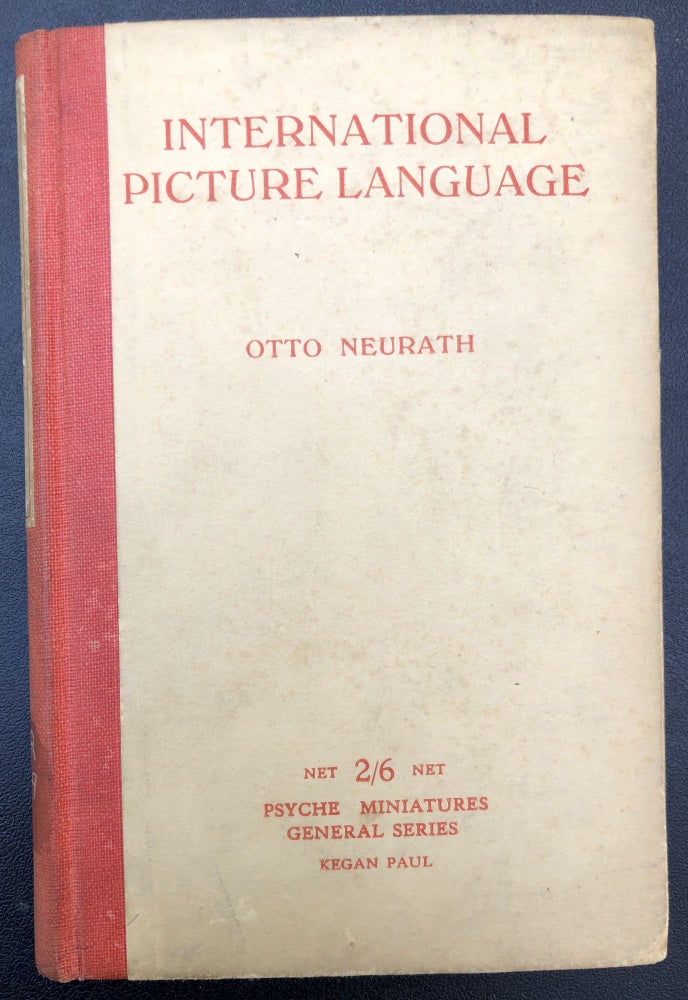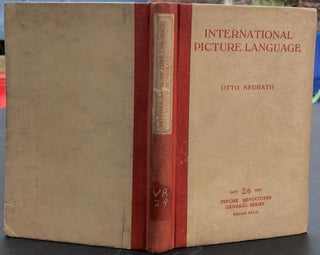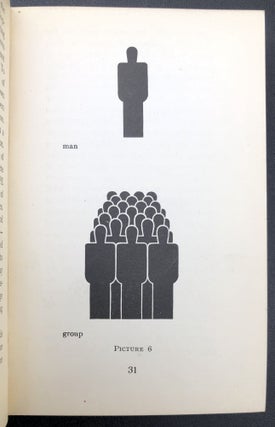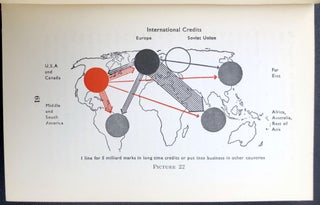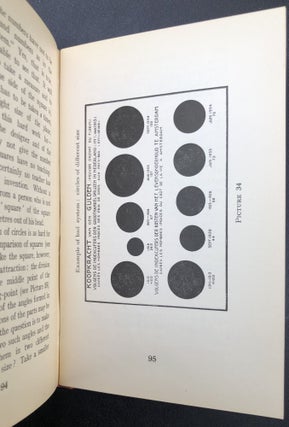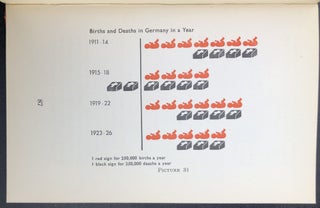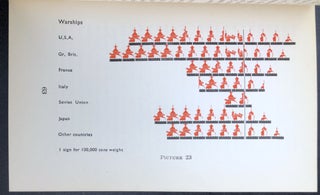International Picture Language, The First Rules of Isotype -- Edgar Dale's copy
London: Kegan Paul, Trench, Trubner & Co., 1936. First Printing. Hardcover. 12mo, 6 x 4.25 inches, original cloth backed boards, near very good, light wear and soil to covers, slight motting to cloth, stamp of Edgar Dale, Curriculum Division, Ohio State University in Columbus, and his small white numbers on spine with a dab of varnish over it. Contents very good, with folding chart frontispiece and with illustrations and plates throughout, some printed in black and red, occasional pencil marks in the margin, likely by Dale; "Dale" written in pencil on flyleaf, too. Nice association copy: Dale was a pioneering educator who invented the "Cone of Experience" also known as the "Learning Pyramid" in his 1946 book on Audio-Visual Methods in Teaching. The second edition (1954) of this book acknowledges Neurath in his description of statistical bar-graphs. "Otto Neurath, their inventor, was primarily concerned with developing a means of dependable communication among all peoples of the earth. Pictures would be the common language — symbolic pictures or 'isotypes.' Neurath and his associates produced each isotype with great care, and once it was perfected it became a permanent symbol." In an Eye Magazine article on Neurath from 1995, they had this to say about the book. " [International Picture Language] turned out to be his fullest exposition of Isotype. This was the approach to visual representation that he and a group of colleagues had begun to develop at their Social and Economic Museum in Vienna from 1925 onwards. The work, especially after the German artist Gerd Arntz had joined the museum in 1928, shows the best characteristics of between-the-wars Modernism: great visual clarity at the service of meaning and social change, concern to spread information and to enable dialogue between citizens. When the brief civil war of February 1934 closed down democracy in Austria, the Neurath group left hurriedly for The Hague. Already in Vienna, Neurath had made a contract for the production of two books with the polymath C. K. Ogden, who among many other things had edited the first English translation of Wittgenstein’s Tractatus. The first book, Basic by Isotype, was an exposition of Ogden’s reduced, more efficient system of language: Basic English. The other part of the deal was to be an explanation of Neurath’s Isotype, written with the 850 words of Basic English. International Picture Language has a utopian vision of an internationally effective system of visual language. As well as its part in twentieth-century Modernism, Isotype claims allegiance with Egyptian hieroglyphics, Comenius’ Orbis Pictus, and the great heritage of scientific illustration, map-making and explanatory imagery of all kinds and from many cultures. Visual presentation, Neurath suggests, can help us to transcend national barriers. ‘Words divide, pictures unite’, his slogan ran." Very good. Item #H30673
Price: $1,500.00

